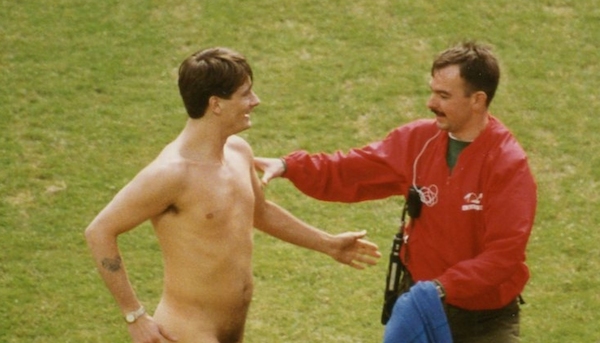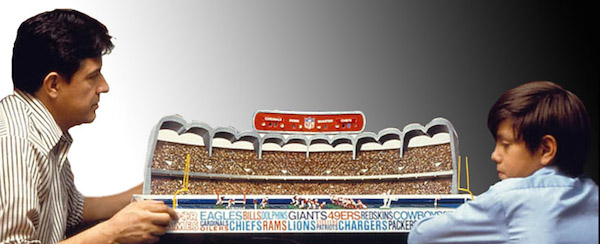The sports and pop culture media outlet, Grantland, is featuring six short films by Errol Morris this week in a series they’re calling, It’s Not Crazy, It’s Sports. I’ve been following along, watching, thinking, and reviewing here. I wrote about the first film in the series, The Subterranean Stadium on Monday, and the second and third films, The Heist and The Streaker on Wednesday. Today’s release is Being Mr. Met an extended interview with AJ Mass, the first person to play the New York Mets mascot when the team revived the character in 1994.
Being Mr. Met is a disappointing effort in what is increasingly a let-down of a series from one of my favorite film-makers. Of the four films, only the first had the type of emotional depth that can elevate this type of short film. Morris barely scratches the surface of what it’s like to be the person inside of a mascot costume. Oh, sure, there’s the obligatory mascot getting hit in the nuts story as well as what could have been a truly scary moment with a group of middle-schoolers with baseball bats. There’s a gesture (one might even say a head-fake to use sports language) at the disconcerting process of separating the actor from the character when Mass was fired by the team.
Mass is a modestly interesting character but nothing in this film even approaches the hilarity and interest in the excellent This American Life radio piece about Navey Baker, a shy high school girl who comes alive when she puts on the school’s tiger mascot costume. That story grabs your attention from the beginning by describing Navey as a four year-old obsessed with pretending to be a dog.
Navey drank from a bowl, crawled around sniffing crotches, and, let’s let her Dad tell the piece de resistance:
I mean, I was fine with her being a dog until she started crapping in the yard. I didn’t think that was very funny [chuckles]… it is funny though.
From that moment on, you’re transfixed to the radio as Navey’s cousin, Elna Baker, leads you in an exploration of her Navey’s life and just how strange the full embodiment of a character can be. Towards the end of the segment, Elna tests her cousin to see if it’s true that she can’t do a simple cartwheel without wearing her tiger costume. It is. Outgoing and acrobatic in costume, Navey remains shy and awkward without it. That’s the type of examination into the power of character and mascots that I would expect Morris to be engaged in with his story about Mr. Met. Instead, Morris seems satisfied to ask softball questions about the “trouble” between Mass and the New York Mets organization and, instead of pursuing a deeper answer, retreats back into detached bemusement.



